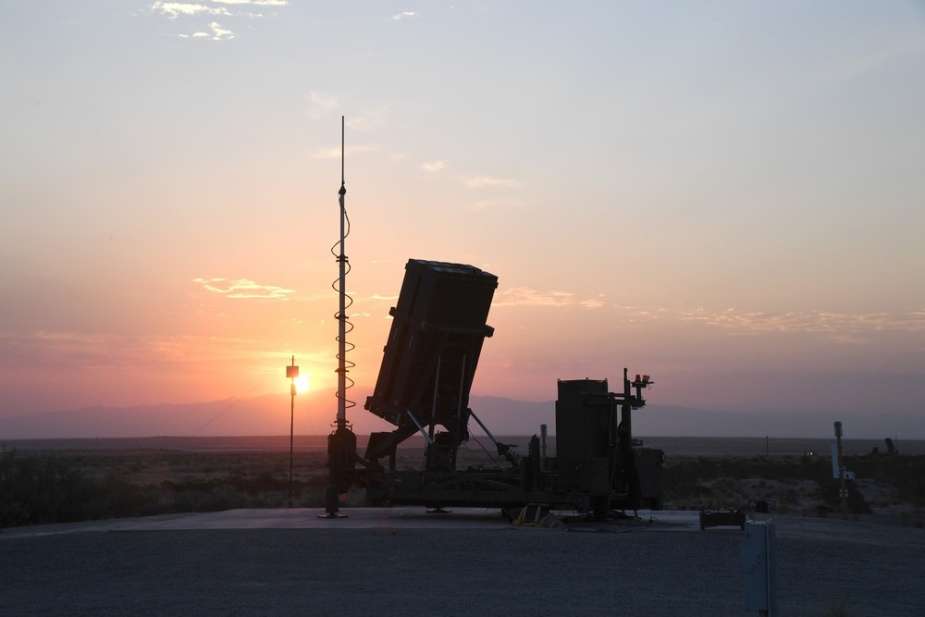What Are the Combat Capabilities of Israel's Multi-Layered Air Defense System?
Israel's missile defense arsenal stands among the most sophisticated in the world, comprising several layers of systems designed to safeguard the nation from diverse aerial threats. This was notably demonstrated on April 13, 2024, when the Israeli multi-layered air defense apparatus played a significant role in intercepting the majority of over 300 Iranian missiles and drones. This article aims to detail the various components of the Israeli defense systems.
Follow Army Recognition on Google News at this link

The various elements of Israeli air defense, including the Patriot, David's Sling, and Arrow systems (Picture source: Graphic News)
The Israeli Defence Forces (IDF) have a sophisticated and multi-layered air defense system, aimed at protecting against a variety of aerial threats. The key components of this system include the Iron Dome, David's Sling, and the Arrow systems. Each of these systems targets different types of threats, from short-range rockets and artillery shells to ballistic missiles at higher altitudes.
The Patriot system, an American-made defense mechanism developed by Raytheon and Lockheed Martin, was initially deployed in the early 1990s. It is designed to intercept crewed aircraft and drones, as well as tactical ballistic missiles. Measuring 5.2 meters in length with an operational range of 160 kilometers, the latest Patriot PAC-3 version uses two-stage solid propulsion missiles that can exceed speeds of Mach 5. Its "Hit-to-Kill" warhead destroys targets through direct impact, which increases the likelihood of neutralizing the threat without the need for a traditional explosive charge.
Manufactured by Israel Aerospace Industries in collaboration with Boeing, the Arrow 3 system is intended to counter long-range ballistic missiles, particularly those capable of reaching exo-atmospheric space. At 7 meters in length and with a range of approximately 150 kilometers, Arrow 3 operates at undisclosed altitudes, indicating exo-atmospheric capabilities. This cutting-edge interception system also utilizes "Hit-to-Kill" technology, though the specifics of its speed remain classified.
The Iron Dome plays a pivotal role in Israel's missile defense, crucial in protecting against short-range rockets and artillery shells. Engineered by Rafael Advanced Defense Systems and Israel Aerospace Industries, the Iron Dome can detect and intercept projectiles from distances of 4 to 70 kilometers. An Iron Dome battery includes advanced detection and tracking radar, a fire control center, and several launchers equipped with Tamir interceptor missiles. These missiles feature a fragmentation explosive warhead, allowing aerial threats to be neutralized mid-flight. The system's response time and accuracy are significant, with a high documented success rate in combat situations. However, each interception incurs a considerable cost, estimated between 40,000 and 100,000 dollars per interceptor missile, highlighting the operational and strategic importance of the Iron Dome in Israel's air defense.
The David's Sling, also known as the "Magic Wand," is a medium to long-range missile defense system developed by Rafael Advanced Defense Systems and Raytheon. It is designed to intercept tactical ballistic missiles, cruise missiles, and heavy drones, providing an intermediate layer of protection between the Iron Dome and Arrow 3. David's Sling has a length of 4.6 meters, a maximum range of 300 kilometers, and uses missiles capable of speeds over Mach 7.5 with a "Hit-to-Kill" warhead.
Additionally, the Barak-8, developed by Israel Aerospace Industries alongside international partners, is designed to counter aerial missiles, including cruise missiles and aircraft, at distances of up to 150 kilometers. In addition to these existing systems, Israel is developing the Iron Beam, a laser air defense system that could potentially intercept threats like UAVs, mortars, and rockets using directed energy. This system is expected to complement the Iron Dome by providing a cost-effective and quick-response solution to certain types of aerial threats. The Iron Beam is projected to be operational within the next 2-3 years.
These systems offer significant advantages. The "Hit-to-Kill" technology reduces the risk of collateral damage as there is no explosive warhead that could impact surrounding areas. Moreover, the ability to intercept threats inside or outside of the atmosphere provides a layered shield of protection. The diversity in range and operational altitude of the different systems allows for layered defense, where each system engages threats within its optimal interception window. Such advanced technologies enable Israel to maintain a robust deterrent and defense capability, crucial in a region often characterized by instability and conflict threats.
Defense News April 2024
- Hits: 2312
















